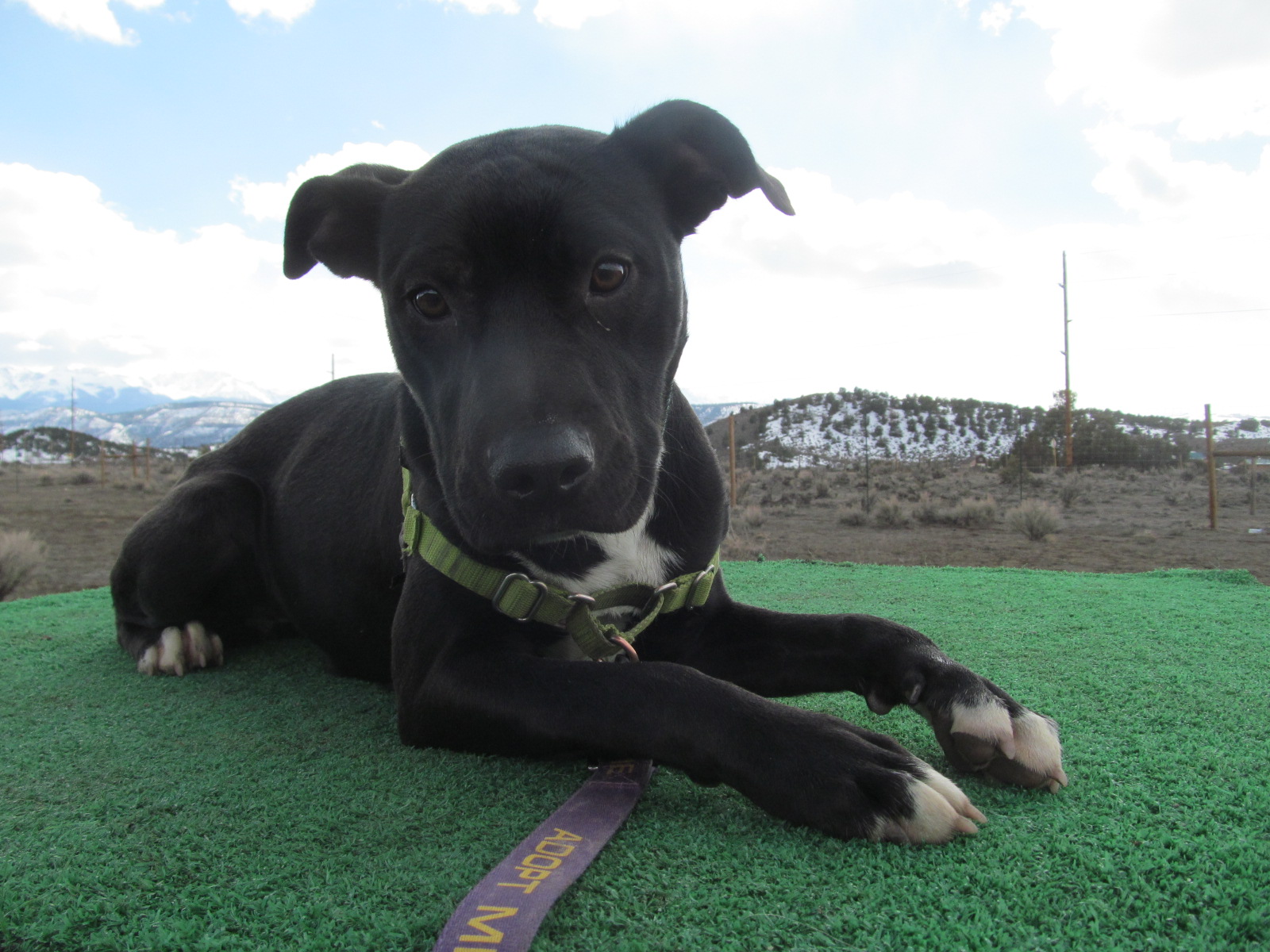
13 Apr Second Chance: Newly Adopted Dog Transition!
Second Chance Humane Society’s Animal Resource Center and Thrift Shops have been serving San Miguel, Ouray & Montrose Counties for 27 years. Call 626-2273 to report a lost pet, learn about adopting a homeless pet, or about our Emergency Response, Community Medical, Spay/Neuter, Volunteer, or other services. View shelter pets and services online: www.adoptmountainpets.org.
For more about Second Chance pets, go here.

Wheezy
Hey there, I’m Annie, although my friends here have nicknamed me Wheezy cuz I am a silly, sporty little dynamo known to make some ridiculous noises. I’m one of the homeless gang at Second Chance looking to be some human’s best friend! Meanwhile, I thought I would prepare all adopters about how all newly adopted dogs need time to adjust to their new families.
Most adopters are excited about their new dog, and can’t wait to show him all life has to offer – BBQs, hiking, road trips! But diving in headfirst is not the best idea. Those critical first few weeks hold the most potential for things to go awry; setting the stage well can positively shape the months and years to come.
Dogs, like people, are socially complex creatures, and transitions are hard for all canines – even confident ones. Most rescued dog’s recent past has been full of stressful experiences; arriving in a new place with people they don’t know yet is yet another. How best to grease the wheels?
Take it slow. Rushing a dog whose world has been turned upside-down into new experiences is a perfect recipe for undesired behavior. Anxious dogs behave poorly. Just because he doesn’t “seem anxious” to you doesn’t mean he’s relaxed. Let him get settled into your home long before presenting complex and unpredictable circumstances like trails loaded with unfamiliar dogs and people.
Busy social situations are stressful, and your dog is likely experiencing enough stress at the moment as it is. Depending on the dog, it can take days, weeks or months to settle in. During this time, let your newly adopted dog simply become familiar with you and your routines. Exercise in quiet places, provide a calm place to retreat to in the home, and integrate him slowly with other pets. Hold off on unnecessary vet visits and most training, except for house training and crate training, unless he is showing problematic behaviors that require immediate attention.
Teach “alone time.” Leave your new dog alone for a little while daily starting Day 1 – preferably in a crate. It’s easy to create a dog dependent on your presence, and difficult to undo. Even if you have the luxury of being around 24/7, go out some without your pup each day, so he doesn’t learn to expect your constant company.
Make no assumptions about what the dog knows. Assume your newly adopted dog is not house-trained to your particular home, will chew on everything, and is unfamiliar with the basics, and you won’t be frustrated or disappointed. Instead, start off with management to set him up for success.
Even if your newly adopted dog seems to respond perfectly to every cue, such a short time together means the foundation of experience is not yet solid. Often, people give a new dog privileges far too soon. Dogs tend to become more curious as they become more confident in a new situation; it only takes a moment for a dog to find trouble. Again, management tools like crates, baby gates, and tethers can really help.
In closing, every dog adjusts at a different pace. Be patient. Once your new dog (I volunteer me!) has developed good habits, you can kiss the transition period goodbye and show your adopted dog all the great things the world has to offer! I look forward to a life of adventures together. Come meet met today!


Sorry, the comment form is closed at this time.